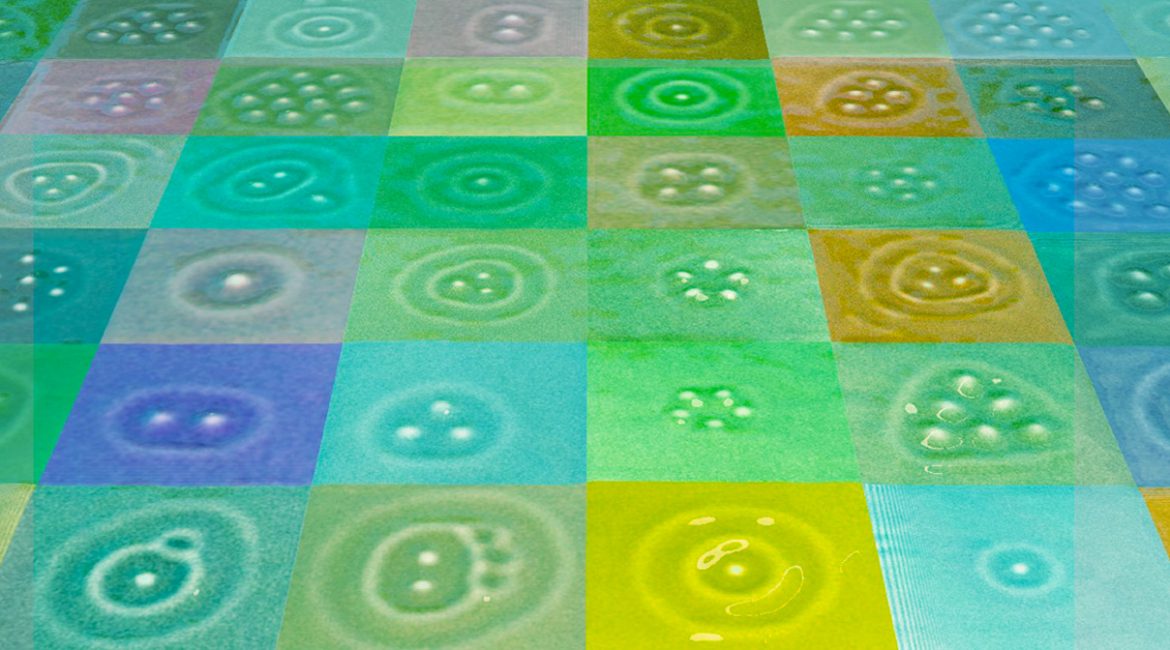| Nov 27, 2023 |
|
(Nanowerk News) Exotic magnetic structures such as skyrmions are also known as topological particles. Because they can be easily moved within a crystal, they are envisioned as promising information carriers of the future. Scientists from Jülich, China and Sweden have now created and observed for the first time a stable hopfion in a solid – a nanoscale sized, 3D magnetic object related to skyrmions. Because of their intricate texture and three-dimensionality, the discovery of hopfions breaks open a new research direction of 3D magnetic particles that may lead to novel next generation data storages and neuromorphic computers.
|
|
The research has been reported in Nature (“Hopfion rings in a cubic chiral magnet”).
|
 |
| Electron microscope images (colored) of different hopfions. (Image: Forschungszentrum Jülich / Nikolai Kiselev)
|
|
Tiny magnetic vortices known as skyrmions have been causing a stir among experts for around twenty years. Unlike other excitations appearing in the magnetic systems skyrmions are very stable due to their so-called topological properties. And in the same way as ordinary particles, they can move and interact under the influence of the external forces.
|
|
In a crystal, these two-dimensional skyrmion vortices stack up to form something similar to strings that run through the entire crystal from one sample surface to the other. In contrast, hopfions are compact configurations that resemble tiny closed loops or knots of skyrmion strings. For decades, hopfions remained a subject exclusively for theoretical research. It was accepted that hopfions would be discovered in certain magnetic materials as stand-alone configurations.
|
|
The experiment performed at Forschungszentrum Jülich revealed that hopfions actually exist and de facto can be coupled to a skyrmion strings – a configuration known as “hopfion ring”. Like a ring on a finger, hopfion rings wrap around ordinary skyrmion strings. The result is an extremely flexible structure. The hopfion rings can easily travel along the string up and down or together with it in any spatial direction, making them a promising candidate as information carriers in various future computing technologies.
|
 |
| The illustration on the left schematically shows the magnetization of the hopfion ring around a skyrmion string. The colored lines consist of dots with identical magnetization directions. The images on the right are electron micrographs of a hopfion ring around a single skyrmion string in an iron-germanium square-shaped platelet. (Image: Forschungszentrum Jülich / Nikolai Kiselev)
|
“Most complex magnetic texture ever detected”
|
|
“This project was full of challenges from the very beginning. We had to find the proper size and shape of the sample, check its quality, and then spend hundreds of hours on the microscope to examine different approaches to excite the system to obtain hopfion rings”, says Fengshan Zheng, the first author of the Nature publication. The tenure-track professor at the South China University of Technology in Guangzhou conducted most of the research work at Jülich’s Ernst Ruska-Centre for Microscopy and Spectroscopy with Electrons (ER-C).
|
|
“The hopfion rings we found are possibly the most complex texture ever experimentally observed in three-dimensional magnetic crystals. The beauty of a physical phenomenon itself and the mathematical elegance of the theory behind it are exciting,” says Dr. Nikolai Kiselev from Jülich’s Peter Grünberg Institute (PGI-1).
|
|
“This is not about an accidental discovery. We have a protocol and can create the hopfions any time on demand. I am convinced that this work opens up new possibilities for the development of future data storage devices and components for neuromorphic computers,” Prof. Stefan Blügel, Director of PGI-1, adds.
|
|
“The detection of hopfion rings in magnetic materials is a key result of the 3D-MAGiC project, for which Stefan Blügel and I, together with two colleagues, received an ERC Synergy Grant from the European Research Council in 2019,” says Prof. Rafal Dunin-Borkowski, Director at Jülich’s Ernst Ruska-Centre for Microscopy and Spectroscopy with Electrons (ER-C).
|
 |
| Computer simulations of hopfion rings of different topological charges. (Copyright: Fengshan Zheng et al, Nature, CC BY 4.0 Deed)
|
Only a few tens of nanometers in size
|
|
The existence of hopfion rings follows from the laws of quantum mechanics and electromagnetism. Advanced computer simulations confirmed the observed phenomenon and also provided scientists with an explanation of the role of the skyrmion strings. They apparently stabilize the hopfions and protect them from collapse. The theoretical analysis by the Swedish partner, Dr. Filipp Rybakov, revealed a connection of the observed phenomena with the very fundamental mathematical theory of homotopy groups.
|
|
The hopfions, the researchers observed in the current experiments, have a diameter of a few tens of nanometres in a plate with an edge length of one micrometer. The plate was cut out of a larger high-quality iron-germanium single crystal made by Haifeng Du at the High Magnetic Field Laboratory in China. Such crystals belong to a class of so-called chiral magnets. In these materials, the magnetic moments are not arranged uniformly, as in most other magnetic crystals, but in a spiral. The team of scientists argue that the observed 3D magnetic structures not only occur in iron-germanium but should also be found in many other chiral magnets with a similar crystal symmetry.
|




